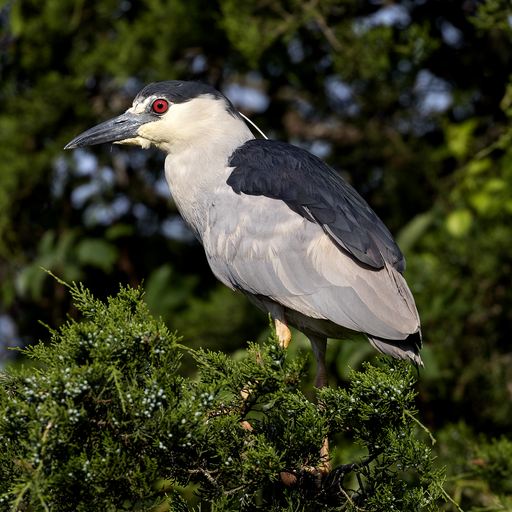Black-crowned Night Heron
Nycticorax nycticorax
Written by Kathy Richards and edited by Chris Coyle
Have been declining since 1900, particularly after WWII, most likely due to DDT, shooting at fish hatcheries, and disturbance of rookeries. Breeds on all continents except Antarctica.
HABITAT:
Primarily coastal and along large lakes (i.e. Lake Champlain). Secluded inland swamps. In Massachusetts, they can be found on Plum Island, the north shore, Cape Cod, Martha’s Vineyard, and Nantucket.
They prefer fresh and saltwater marshes and wooded wetlands. This includes long lakes, marshes, swamps, slow-moving streams with pools, rivers, canals, and reservoirs. Also, in wooded areas near wetlands. It eats mostly at dawn and dusk.
BEHAVIOR:
Forages in shallow muddy and sandy bottom waters such as tidal creeks, ponds, and edges of swamps. It feeds either by slowly wading or standing still, waiting, its neck curved, head lowered, ready to strike at passing prey with its bill.
NESTING:
Lays eggs between April 10 and June 30 in Massachusetts. The clutch size is 2-6 (most often 3-5). Nests may be built in wooded and shrub swamps, sometimes city parks. They usually build a floating nest but occasionally will build their nests in trees. Eggs are laid every other day. They usually nest in large colonies, several hundred birds.
FOOD:
Salt and freshwater fish, crustaceans, mollusks, leeches, insects (both aquatic and land), reptiles, amphibians, occasionally young birds and mammals.
PREDATORS:
People.

